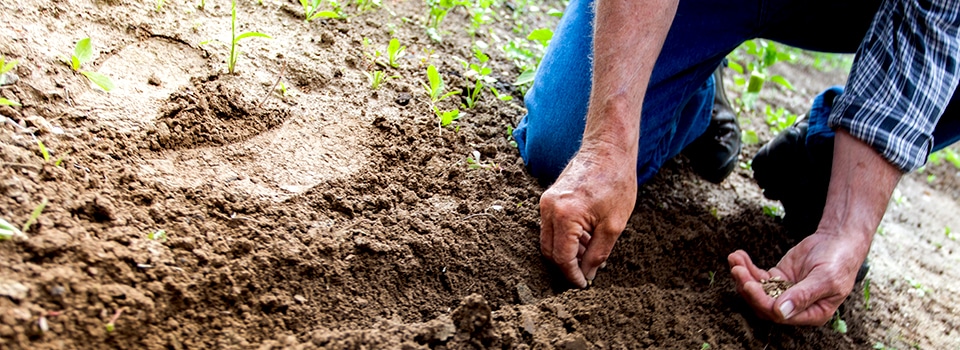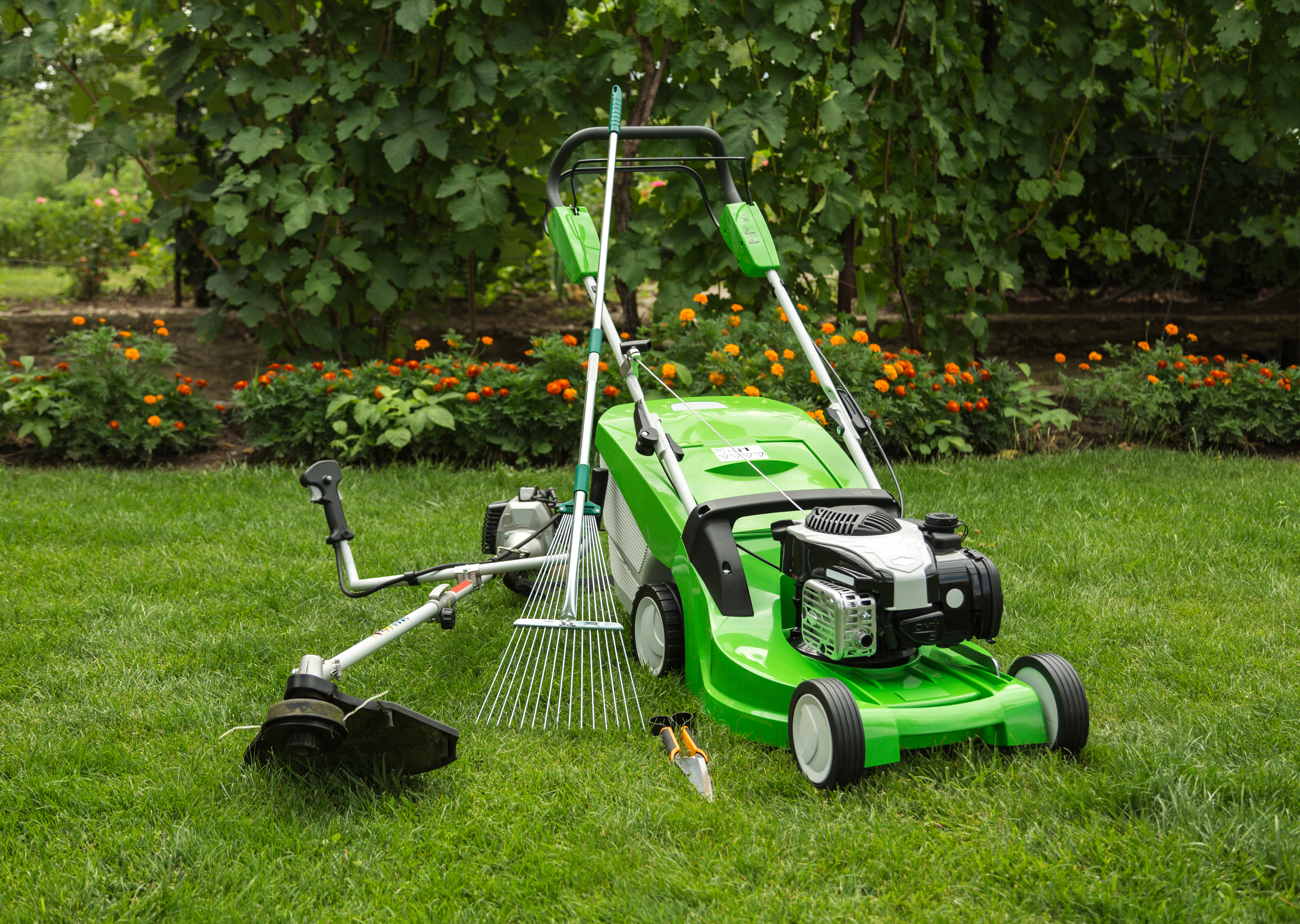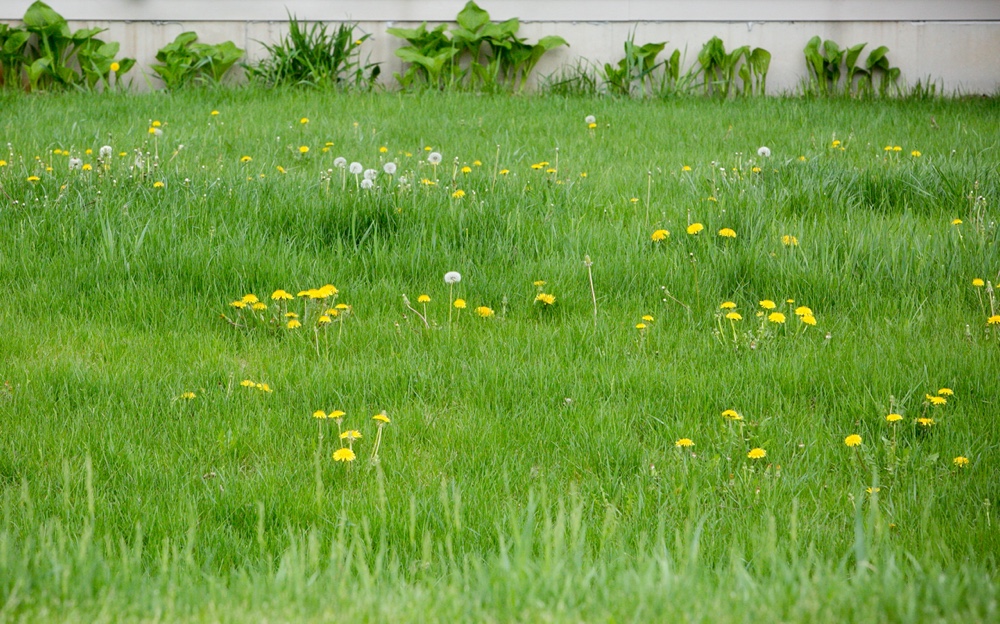Identifying Common Lawn Weeds
To identify the weeds that are growing on your lawn, first take a look at the common types of lawn weeds. These include dandelions, crabgrass, and chickweed.
To identify a weed, look for its unique features. For example, Chickweed has narrow leaves that are green on the top and white on the bottom, while Crabgrass has long grass blades with sharp points.
Once you’ve identified the weed, you can start taking steps to remove it from your lawn. Some methods for removing weeds from your lawn include pulling them by hand or using herbicides.
There are many ways to remove weeds from your lawn – whatever works best for you will depend on the weed and the terrain where it is growing.
Plantain
Plantain is a common weed that can be found in many lawns. It can be a nuisance because it crowds out desirable grasses and can be difficult to control. Hand-pulling or mechanical removal are the best methods for getting rid of plantain weeds. Be sure to remove the entire root system to prevent regrowth. Regular mowing and good lawn care practices can help prevent plantain from taking over your lawn in the first place.
Dandelion
Dandelions are one of the most common weeds in lawns. They can be easily identified by their bright yellow flowers, and can be removed by hand, but this is often not practical for a large area.
There are several herbicides that will effectively kill dandelions without harming the grass. Be sure to read the label carefully before using any herbicide, as some may not be safe for use around children or pets.
Once the dandelions are gone, make sure to take steps to prevent them from returning in the future: Mulch your lawn regularly with a dense layer of straw or compost; keep an eye out for patches of new growth; and remove any competing plants (such as broadleaf weeds) from around your lawn.
Common ragweed
One of the most effective ways to get rid of ragweed is to pull it by hand. This can be done before or after mowing your lawn to help prevent it from taking over.
Regularly mowing your lawn can help keep ragweed at bay, since it will not be able to grow as well in close proximity to the ground.
Herbicides can be an effective way to kill ragweed, but be sure to follow the instructions carefully and use the correct product for your area.
If you have a large area of ragweed, you may want to consider using a rototiller to remove it. Rototilling is an effective way of breaking up the soil so that herbicides will work more effectively.
Burning Ragweed can also be an effective way of getting rid of ragweed, but make sure you do so safely and only if local laws allow it.
Daisy
Identification: The first step to getting rid of daisies is to correctly identify them. Daisies are a type of weed that has white or yellow petals and a black center.
Pulling: Once you have identified the daisies, you can start pulling them up by hand. This is the best method for small areas.
Digging: For larger areas, you may need to dig up the daisies with a shovel or hoe. Be sure to get all of the roots so that they don’t grow back.
Herbicides: You can also use herbicides to kill daisies. Be sure to follow the directions on the label and only apply when necessary, as herbicides can also kill desirable plants.
Prevention: The best way to deal with weeds is to prevent them from growing in the first place. This means keeping your lawn healthy and free of debris where weeds can thrive
Grassy weeds and crabgrass
Identification of the weeds: To get rid of a lawn full of weed, you first need to identify which ones are causing the problem. There are many different kinds of grassy weeds, and each requires a different approach for removal.
Selecting the best method of removal: Once you know what kind of weed you’re dealing with, you can select the most effective method for removing it.
Grubbing: Grassy weeds like crabgrass can be removed by grubbing. This involves pulling up the roots with a garden fork or spade.
Using herbicides: If the weed is already mature and has deep roots, you may need to use an herbicide specifically designed to kill that type of weed. Be sure to follow the directions on your product carefully, and avoid damaging your lawn in the process!
Chemical Weed Treatment For Lawns
Weeds can be a major problem on lawns, especially if they are growing in abundance. There are a number of ways to get rid of weeds, including using chemical weed treatment.
There are a number of different chemicals that can be used for weed treatment, so it is important to choose the right one for your lawn. Weeds will grow more slowly when treated with a specific type of chemical, so it is important to apply the treatment when the weeds are actively growing. Be sure to follow the instructions on the product you use, and always wear protective gear when handling chemicals.

1. Weed And Feed
Apply a weed and feed fertilizer to your lawn to help kill existing weeds and prevent new ones from growing.
Be sure to follow the directions on the fertilizer package, as applying too much can damage your lawn.
Water your lawn after applying the fertilizer, as this will help it to be more effective.
You may need to reapply the fertilizer several times throughout the year to keep weeds at bay.
If you have a serious weed problem, you may want to consult with a professional landscaper for help getting rid of them
2. Weed B-Gon
To get rid of a lawn full of weeds, use Weed B-Gon. It is available in both liquid and granular form, so you can choose the best option for your needs. Weed B-Gon is safe to use around children and pets, so you don’t have to worry about them being exposed to harmful chemicals. It is also effective against a wide variety of weeds, so you can get rid of all the unwanted plants in your lawn with one product. Apply Weed B-Gon using a sprayer or hand applicator; it is easy to do and will quickly kill any weed growing in your lawn.
Early Spring Weed Control
Weeds can be a major problem in your lawn, especially in the springtime.
There are a few things you can do to help control weeds in your lawn.
One way to control weeds is to mow them down before they have a chance to seed.
Another way to control weeds is to use herbicides that are specifically designed for killing weeds.
You may also want to consider hiring a professional lawn care company to help you with your weed problem
Applying Pre-Emergent
If your lawn is full of weeds, it’s not too late to take action! Applying pre-emergent herbicides (see point 0) is a great way to get rid of existing weeds and prevent new ones from taking root. Pre-emergent herbicides work by creating a barrier in the soil that prevents weed seeds from germinating. This makes them an effective tool for both short-term weed control and long-term prevention. When applying pre-emergent herbicide, be sure to follow the instructions on the label carefully. This will ensure that you are using the product correctly and maximizing its effectiveness. Be patient when using pre-emergent herbicide – it can take up to several weeks for it to take full effect. In the meantime, you can help control existing weeds by manually removing them or spot treating with another type of herbicide (see points 3 and 4). Regularly mowing your lawn and keeping your garden free of junk food will also help keep your lawn healthy and weed free!
Tips on Keeping Lawn Weed Free
Mow weeds down as soon as they appear to prevent them from going to seed. This will help keep the lawn weed free.
Hand-pull small patches of weeds before they spread. This will help you avoid large areas of weed growth.
Use a hoe or trowel to dig up larger weed patches. This will help you get rid of the majority of the weeds in one go.
Apply an herbicide specifically designed for lawns to kill existing weeds and prevent new ones from germinating. This is a very effective way of preventing lawn weed growth.
Regularly fertilize and water your lawn to make it healthy and less susceptible to weed invasions. Doing this will help keep your lawn weed free.

Weed prevention tips: Getting Rid Of Weeds In Lawn Naturally
First, it’s important to identify the type of weed you’re dealing with. Here are some tips for identifying common lawn weeds:
-Weeds that grow close to the ground (like dandelions) are typically easy to remove using hand tools.
-Weeds that grow taller (like thistles) require a different approach, as they need to be cut down at a higher level before they can be eliminated.
-Weed prevention tips: Getting Rid Of Weeds In Lawn Naturally
Assess your lawn’s current condition. If your lawn is in poor condition, there’s a greater chance that weeds will take over and become problematic. Poorly maintained grass can also contain more moisture, which favors weed growth.
Take steps to prevent weeds from taking over your lawn in the future. This includes maintaining good soil health by fertilizing once or twice per year and keeping grass trim so that it doesn’t get too long or dense. It also helps to avoid water problems by watering correctly and avoiding runoff during heavy rainstorms or snow melt season..
Consider using natural methods to get rid of existing weeds without resorting to harmful chemicals or herbicides.. One popular option is using compost tea; simply combine equal parts compost and water, pour into a spray bottle, and mist the area where you want the weed gone. Repeat every few days until the weed is gone..
Lastly, stay vigilant in order to keep your lawn weed-free! A healthy Lawn requires regular care – including weeding – in order for it maintain its beautiful appearance
Lawn Aeration
Lawn aeration is a great way to get rid of weeds in your lawn. Aerating your lawn will help improve its overall health. It is best to aerate your lawn in the spring or fall. You can either rent an aerator or hire a professional to do it for you. After aerating, be sure to fertilize and water your lawn regularly to maintain its health.
Pull weeds out by hand
If you want to get rid of weeds in your lawn, the best method is to pull them out by hand. This can be time-consuming, but it’s the most effective way to remove them. Be sure to wear gloves and long sleeves when doing this so that you don’t irritate your skin from the weeds. If you have a large area of weeds, consider renting a tiller or hiring a professional lawn care company. Regularly mowing your lawn will also help reduce the number of weeds in your yard.

Use a home-made herbicide
Use a home-made herbicide to get rid of weeds. This is more effective and less expensive than commercial weed killers.
To make a home-made herbicide, mix one part vinegar with two parts water in a spray bottle.
Be careful not to get the mixture of desirable plants nearby.
Spray the mixture on the leaves of the weeds, being careful not to get any desirable plants nearby.
Sprinkle cornmeal
Sprinkling cornmeal is an effective way to get rid of a lawn full of weeds. The cornmeal will kill the weeds by preventing them from photosynthesizing, and you need to be careful not to overdo it, as too much cornmeal can kill your grass as well. Once the weeds are dead, you can then rake them up and dispose of them. This method is best used in early spring or late fall, when the weed growth is most active.
Cover with mulch
Mulch is an effective way to smother weeds and prevent them from growing. A thick layer of mulch, at least 3 inches deep, is necessary to provide the weed-killing coverage needed. Apply mulch around the base of plants, taking care not to pile it too high against the stems. Use organic mulches like shredded bark or leaves, which will break down over time and improve your soil. Keep an eye on the mulch layer, and add more as needed to keep the weeds at bay.
Pickle them with vinegar
Vinegar is a safe, non-toxic alternative to chemical herbicides.
Vinegar can be used to pickle weeds and kill them naturally.
Vinegar is easy to make your own weed killer with just a few ingredients.
Vinegar won’t harm your grass or other plants, so it’s safe to use around them.
You can find vinegar at any grocery store or online.
